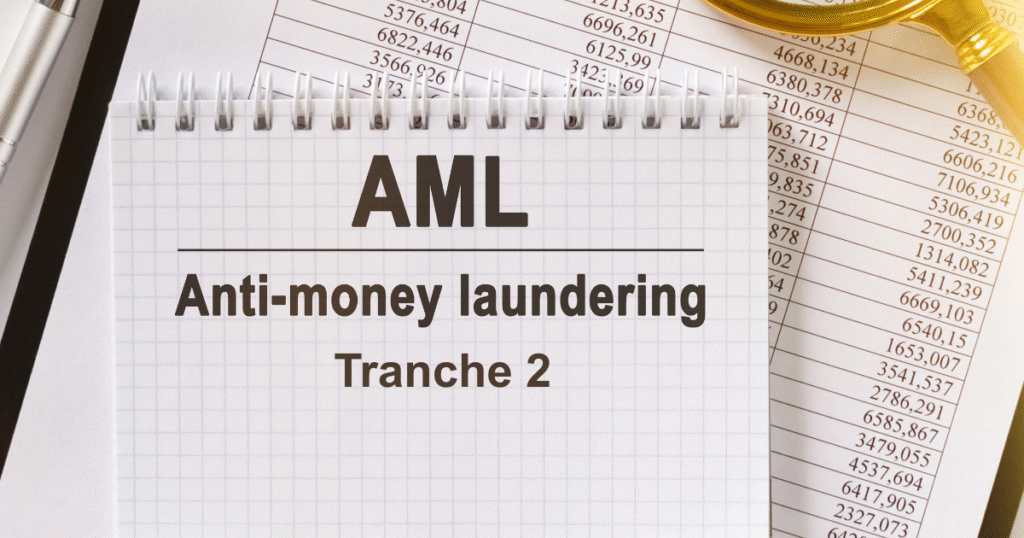Introduction
In Australia, conducting money laundering and terrorism financing (ML/TF) risk assessments for your business ensures compliance with anti-money laundering and counter-terrorism financing (AML/CTF) obligations. These risk assessments are the foundation of a robust AML/CTF program, enabling you to understand and effectively manage the level of risk your business faces from ML/TF.
Conducting thorough risk assessments helps with developing tailored AML/CTF programs that incorporate appropriate risk mitigation measures for Australian businesses. By understanding their unique risk factors, businesses can protect themselves from being exploited by criminals involved in ML/TF activities.

Understanding the Purpose and Importance of AML/CTF Risk Assessments
Foundation of an Effective AML/CTF Program
Anti-money laundering and counter-terrorism financing (AML/CTF) risk assessments help establish robust and effective AML/CTF programs. These assessments are essential tools that help businesses understand and manage their exposures to money laundering and terrorism financing (ML/TF) risks.
The risk assessment process is crucial because it:
- Determines necessary measures: It dictates the type and intensity of AML/CTF controls that a business needs to implement. The level of risk identified directly influences the stringency of customer due diligence, transaction monitoring, and other preventative measures.
- Informs program tailoring: A generic AML/CTF program is unlikely to be effective. Risk assessments ensure that AML/CTF programs are specifically tailored to the business’s unique risk profile, reflecting its services, customer base, and operational environment.
- Supports a risk-based approach: AML/CTF laws in Australia are fundamentally risk-based. Risk assessments are the mechanism through which businesses operationalise this approach, allowing them to focus their compliance efforts where they are most needed.
Protecting Businesses from Criminal Exploitation
A primary purpose of conducting AML/CTF risk assessments is to safeguard businesses from being exploited by criminals for illicit activities. ML/TF pose significant threats, not only to the global economy and security but also directly to individual businesses. By diligently assessing their vulnerabilities, businesses can proactively implement measures to protect themselves from these threats.
Assessing the ML/TF risk enables businesses to:
- Identify vulnerabilities: Risk assessments pinpoint the specific weaknesses within a business that could be exploited by those engaged in ML/TF. This includes evaluating customer types, service offerings, delivery channels, and jurisdictional exposures.
- Implement protective controls: Once risks are identified and assessed, businesses can develop and implement targeted controls to mitigate these vulnerabilities. These controls are designed to reduce the risk of the business being used, intentionally or unintentionally, for criminal purposes.
- Reduce risk of financial and reputational damage: Effective AML/CTF programs, grounded in thorough risk assessments, minimise the risk of financial penalties, regulatory action, and severe reputational damage that can arise from involvement in money laundering or terrorism financing.
- Maintain business integrity: By actively managing ML/TF risks, businesses uphold their integrity and contribute to the broader effort of combating financial crime, fostering a safer and more secure financial environment.
Get Your Free Initial Consultation
Request a Free Consultation with one of our experienced AML Lawyers today.
Key Principles and Elements of Australian AML Risk Assessment Guidelines
Risk-Based Approach
The risk-based approach is fundamental to AML/CTF financing frameworks in Australia. AML/CTF laws require businesses to assess the specific ML/TF risks they face.
This approach necessitates that businesses tailor their AML/CTF programs and risk mitigation measures to be proportionate to the identified level of risk. A comprehensive risk assessment methodology is essential to effectively evaluate these risks.
By adopting a risk-based approach, businesses can:
- Allocate Resources Effectively: Focus efforts on higher-risk areas while maintaining flexibility in lower-risk areas.
- Enhance Protection: More effectively safeguard the business from exploitation by criminals involved in ML/TF.
Considering Customer, Service, Delivery Channel, and Jurisdictional Risks
When undertaking a financing risk assessment, businesses must consider several key elements to effectively evaluate their ML/TF risks. These four main elements are crucial for a meaningful and holistic assessment:
- Customer Risk: Assess the types of customers, including whether they are politically exposed persons (PEPs) or belong to segments that pose a higher inherent risk. Customer risk pertains to the potential involvement of customers in money laundering or financing terrorism.
- Service Risk: Evaluate the types of designated services offered. Each service should be measured for its risk level—low, medium, or high—and have corresponding risk mitigation strategies within the AML/CTF program. Product and service attributes can increase vulnerability to misuse.
- Delivery Channel Risk: Consider the methods used to deliver services, such as face-to-face interactions or non-face-to-face channels like online platforms. Non-face-to-face channels can sometimes elevate the risk level due to reduced verification capabilities.
- Jurisdictional Risk: Evaluate the foreign countries or regions where the business operates. Jurisdictions with higher levels of corruption, weak AML/CTF regimes, or those subject to sanctions pose an elevated risk of ML/TF.
Incorporating AUSTRAC Guidance and Feedback
Businesses are obligated to incorporate Australian Transaction Reports and Analysis Centre (AUSTRAC) guidance and feedback when developing or updating their financing risk assessments. This is a critical element of the Australian AML risk assessment guidelines. AUSTRAC provides various resources to help businesses understand and address ML/TF risks.
Incorporating AUSTRAC guidance and feedback is important for several reasons:
- Awareness of Emerging Risks: AUSTRAC guidance can highlight new or evolving ML/TF risks that businesses may not have previously recognised.
- Dynamic Risk Landscape: As ML/TF risks constantly evolve, AUSTRAC’s insights help businesses stay current with these changes.
- National and Sector-Wide Perspective: AUSTRAC offers national and sector-based risk assessments that provide a broader view of risks beyond what individual businesses might identify.
- Impact on Business-Specific Risks: National or sector-wide risks identified by AUSTRAC can significantly influence the specific risks faced by individual businesses.
AUSTRAC publishes a range of guidance products, including:
- National Risk Assessments: Strategic overviews of ML/TF threats and vulnerabilities across Australia.
- Sector-Based Risk Assessments: Assessments focused on the specific risks relevant to particular industries, such as banking, financial services, and gambling.
- Financial Crime Guides and Threat Alerts: Information on specific crime types, emerging threats, and indicators of suspicious activity.
- Sector-Specific Guidance Pages: Tailored guidance for various industries, including risk information and indicators of suspicious activity relevant to each sector.
- Typology and Case Studies Reports: Explanations of methods criminals use to launder money, providing valuable insights for mitigating these risks.
Regular Review and Updates for Dynamic Risk Management
To ensure ongoing effectiveness, the risk assessment methodology must be dynamic and adaptable. Regular reviews and updates are necessary to remain current and accurately capture the evolving risk landscape. AUSTRAC has identified instances where businesses failed to regularly review and update their ML/TF risk assessments.
Key triggers for review and updates include:
- Changes in Business Operations: Significant changes such as introducing new designated services, altering service delivery methods, adopting new technologies, or expanding into new jurisdictions require a review of the risk assessment. Businesses must assess the ML/TF risk of any new service or process before offering it to customers.
- Changes in Customer Base: Shifts in the customer base, such as acquiring new customer segments or changes in customer demographics, should prompt a review of the risk assessment. Additionally, changes in customers’ circumstances necessitate a reassessment of their risk levels.
- Regulatory Updates and Guidance: New guidance or feedback from AUSTRAC, changes in legislation, or updates to national risk assessments should trigger a review to ensure the business’s risk assessment aligns with current expectations and emerging threats.
- Internal Reviews and Audits: Findings from internal audits or independent reviews of the AML/CTF program may highlight areas where the risk assessment needs to be updated or refined.
Practical Challenges in Conducting AML/CTF Risk Assessments
Resource Allocation and Planning
One of the primary hurdles in undertaking comprehensive risk assessments is the effective allocation of resources and planning. Conducting thorough ML/TF risk assessments can be notably time-consuming and resource-intensive, especially when it involves gathering necessary information from various business stakeholders, systems, and databases.
Businesses may face constraints such as a lack of dedicated resources or find that key personnel are already stretched thin, lacking the capacity to consistently perform comprehensive risk assessments. Additionally, short completion timeframes or the prioritisation of other business needs can negatively impact the quality and depth of these assessments.
To effectively conduct risk assessments, businesses need to carefully consider:
- Time Commitment: Allocate sufficient time for the risk assessment process, recognising it’s not a quick, superficial task.
- Expertise: Ensure access to personnel with the necessary expertise in AML/CTF risk assessment methodologies and the relevant business areas.
- Resource Availability: Dedicate adequate resources, both human and technological, to support comprehensive data gathering and analysis.
- Planning: Develop a detailed project plan for the risk assessment, outlining timelines, responsibilities, and resource allocation to ensure a structured and efficient process.
Methodology Development and Implementation
Developing and implementing a robust and relevant risk assessment methodology presents another significant challenge for businesses. Many businesses struggle to create an in-house methodology that delivers a comprehensive and pertinent view of their ML/TF risk exposure.
A crucial aspect of methodology development is ensuring it aligns with the specific nature, size, and complexity of the business. A generic approach may not accurately capture business-specific risk factors. When considering “off-the-shelf” risk assessment solutions, businesses must be diligent in understanding the solution’s inputs, underlying methodology, and the outputs it generates.
An effective risk assessment methodology should incorporate a blend of:
- Quantitative Risk Attributes: Utilising measurable data to provide an objective basis for risk assessment.
- Qualitative Risk Attributes: Incorporating expert judgment and contextual understanding to capture nuanced risks that quantitative data alone may miss.
Engaging Stakeholders and Data Collection
Engaging key stakeholders across different business areas and ensuring effective data collection are critical, yet often challenging, aspects of conducting AML/CTF risk assessments. Adequate engagement with business stakeholders is essential to ensure that a risk assessment accurately captures business-specific ML/TF risks. However, identifying and securing the participation of stakeholders who possess an appropriate level of knowledge across relevant risk factors can be difficult.
Furthermore, a lack of comprehensive AML/CTF knowledge within the business can hinder the reporting entity’s ability to truly understand the level of risk present in its various business areas. While using quantitative data in a risk assessment promotes an objective and consistent approach, businesses frequently encounter challenges in gathering meaningful data that is reliable, accurate, complete, and consistently available across the entire organisation.
To overcome these challenges and ensure a meaningful and holistic assessment, businesses should focus on:
- Stakeholder Identification: Identify and engage key personnel from various departments who possess relevant knowledge of business operations and associated risks.
- Data Reliability: Implement processes to ensure the data used in the risk assessment is reliable, accurate, and complete, addressing any data quality issues proactively.
- Knowledge Enhancement: Invest in AML/CTF training and awareness programs to improve the overall level of understanding within the business, enabling more informed stakeholder contributions.
- Objective Approach: While using quantitative data, ensure the risk assessment methodology also incorporates qualitative insights to provide a balanced and comprehensive view of risk.
Get Your Free Initial Consultation
Request a Free Consultation with one of our experienced AML Lawyers today.
Conclusion
Conducting money laundering and terrorism financing ML/TF risk assessments is a regulatory requirement for Australian businesses. It protects businesses’ operations and maintains financial system integrity. These assessments underpin robust anti-money laundering and counter-terrorism financing (AML/CTF) programs by helping businesses identify and manage their specific risk exposures. By evaluating factors such as customer, service, delivery channel, and jurisdictional risks, businesses can tailor strategies to mitigate vulnerabilities and comply with Australian AML risk assessment guidelines.
To navigate the complexities of AML/CTF compliance and effectively implement robust risk assessment methodologies, businesses can benefit from expert guidance and support. AML House, with its unparalleled expertise in AML/CTF, stands ready to assist your organisation. Contact AML House today to explore our proven solutions and ensure your business is fortified against financial crime and fully compliant with regulatory expectations.
Frequently Asked Questions
The primary legislation is the Anti-Money Laundering and Counter-Terrorism Financing Act 2006 (Cth) (AML/CTF Act 2006 (Cth)). This Act requires reporting entities to have policies and procedures to manage money laundering and terrorism financing (ML/TF) risks. The AML/CTF Act 2006 (Cth) will establish a clear requirement for entities to conduct a risk assessment.
The Australian Transaction Reports and Analysis Centre (AUSTRAC) enforces AML risk assessment guidelines. AUSTRAC is Australia’s financial intelligence unit and AML/CTF regulator. They oversee compliance with the AML/CTF Act 2006 (Cth) and related rules.
The risk-based approach requires businesses to identify, assess, and understand their specific money laundering and terrorism financing risks. Businesses must implement proportionate measures to mitigate these risks. This approach ensures resources are directed where they are most needed.
Key factors include customer types, designated services, delivery channels, and jurisdictions. Consider the types of customers, services provided, how services are delivered, and the regions of operation. Reporting entities must consider these factors to evaluate their risks.
AML risk assessments should be reviewed at least every three years and when significant business or regulatory changes occur. The risk assessment methodology must be dynamic and adaptable. Reviews and updates are essential to remain current with the evolving risk landscape.
Consequences include civil penalties and regulatory action from AUSTRAC. Creating and implementing an effective AML/CTF program is a legislative obligation. Failure to comply can result in penalties.
Businesses should conduct a thorough risk assessment, considering their specific services, customers, and operational context. Tailor the program to reflect the designated services and relevant risks. Avoid generic templates.
Businesses should be aware of the Anti-Money Laundering and Counter-Terrorism Financing Amendment Act 2024 (Cth), commencing March 31, 2026. This includes new requirements for risk assessments and AML/CTF programs. The act clarifies that risk assessments must be reviewed to remain current.
Resources and guidance can be found on the AUSTRAC website. This includes national and sector-specific risk assessments, financial crime guides, and regulatory updates. AUSTRAC provides support for conducting risk assessments and implementing AML/CTF programs.








